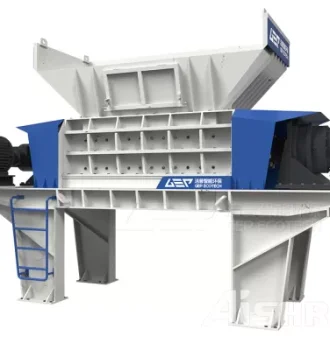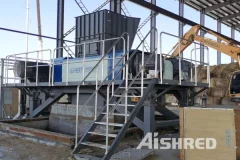
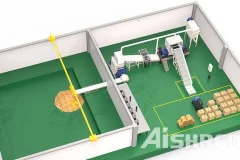
Straw Pretreatment System for Biopower Plant
2023-06-06Crop straws, like other agricultural and forestry wastes, are widely used biomass energy. Using them as fuel for biomass power plants is one of the popular options. There are many advantages to using crop straws to generate electricity. They usually have a high calorific value, can enter the boiler without complicated treatment, and do not consume carbon emission quotas. To use crop residues and other biomass materials to generate electricity or heat, they just need to be processed to a size suitable for combustion. It's simple, yet challenging. The main reason is that the boiler cannot be turned off, and the fuel must be continuously and stably supplied Using the AIShred biomass pretreatment system, ou can draw on our many years of experience in this field. The system is composed of biomass shredder, chain plate conveyor, belt conveyor, magnetic separator, intelligent monitoring system, and dust collector. It can process biomass raw materials to suitable uniform sizes according to recycling needs. The
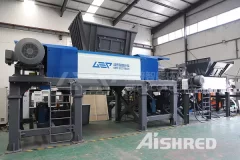
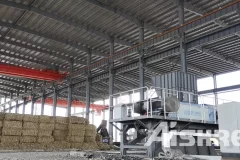
Biomass Fuel Shredder for Industries
2023-02-15AIShred biomass fuel shredder is simply a kind of mechanical equipment used for coarse shredding, which is often used in tire disposal projects. Compared with other shredding, it has low knife shaft speed, low noise and low energy consumption. Biomass includes all plants and microorganisms, as well as animals that feed on plants and microorganisms and the waste they produce. Representative biomass, such as crops, crop waste, wood, wood waste and animal manure. Narrow concept: Biomass mainly refers to lignocellulose such as straw and trees, offcuts from the agricultural processing industry, agricultural and forestry waste, livestock manure and waste from livestock production. Agriculture and forestry production in addition to grain and fruit. Characteristics:Good reproducibility, low pollution, and wide distribution. The twin shaft shredder for cleaning biomass uses the shearing principle to shred materials. The equipment has the advantages of stable performance, large processing capacity, high efficiency and
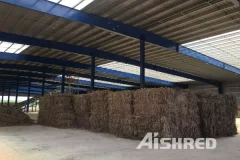
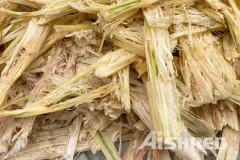
Sucrose is an important food, condiment and chemical raw material in the world today. As one of the important sources of sucrose, sugar cane is an important economic crop and widely planted in Brazil, India, southern China, Thailand, Pakistan, Mexico, Colombia, Australia, Guatemala, United States, Indonesia, Philippines, Argentina, Cuba, Vietnam, Egypt, South Africa, Myanmar, Peru, Ecuador and other places. In the process of sugarcane planting and extraction, various sugarcane leaves, bagasse and other residues are produced, which is also an important resource and can be used for papermaking raw materials or biofuels. This article focuses on the conversion of bagasse into biofuel. There are two ways to convert sugarcane bagasse and sugarcane leaves into biofuel, one is to convert it into combustible gas by high temperature gasification or anaerobic fermentation, the other way is to use a shear shredder to process it into suitable size that called as solid fuel, which can be burned directly in boiler.
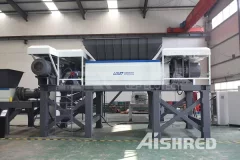
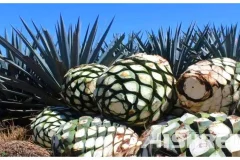
Tequila,a distilled beverage made from the blue agave plant, produced mainly in the area around the city of Tequila, 65 km (40 miles) northwest of Guadalajara, and in the highlands of Los Altos de Jalisco, in the state of Jalisco in west-central Mexico.It takes 8-10 years for a mature agave plant to grow, its rootstock is so large that it weighs several hundred kilograms and is known as a "natural brewer".Then, the use of the rootstock goes far beyond that. The agave is squeezed to squeeze out as much of the juice as possible before it is used for brewing, a process that removes roughly 50% of the water from it, while the rest of the material can be shredded, dried and made into biomass pellets to be burned in boilers. AIShred, as a specialist in biomass disposal, has a wide range of shredders to provide material disposal services.We can supply low speed, high torque double-shaft shredders for cutting and shredding materials. The customised cutters are made of NiCrMo imported from Europe for long life and
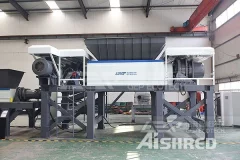
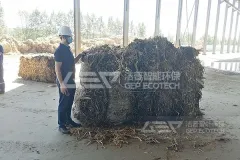
Equipment Selection for Biomass Shredding
2022-05-28In the field of biomass straw disposal, the shredding output of biomass is huge and some companies need uninterrupted operation of the equipment because of the demand for shredding output. Then this also strictly requires the hard core quality of the shredding equipment. At present, the biomass straw shredding industry, facing some more complex problems, such as: low production, high energy consumption, noise, frequent maintenance, failure rate and so on. Once these problems occur, the operation of the shredding line is bound to be affected. In response to these challenges, AIShred has designed the GDB biomass straw shredding plant to meet the industry's needs. The plant can meet the size of the shredded material, and the shredded material can also be directly burned for power generation. The material of biomass straw is usually divided into loose, square or round bales. The feeding method is not only by means of a grab feed bucket, but also by means of a metal chain conveyor. This conveyor has a large load
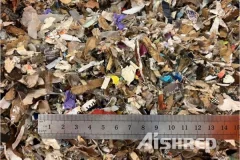
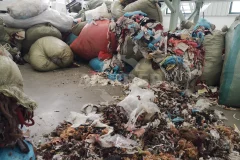
Solid Waste to Engineered Fuel Solution
2022-05-27Engineered fuel is a kind of alternative fuel produced by processing and blending construction and demolition material, and/or select industrial and/or commercial byproduct material streams including: plastic, paper, paper mill contraries, paper fiber, cardboard, textiles, carpet, and rubber.Waste to Engineered Fuel Processingpre-screening of potential customers' material before it is received;feedstock acceptance practices to ensure a primarily wood-based product and removal of materials that may have high contaminant levels;removal of metals and fines;manual sorting to remove residual contaminated material;shredding to improve the fuel characteristics of the material;final screening to ensure consistency and low ash levels and improved combustion in the fuel.GEP ECOTECH Shredding Solution in Waste-to-Fuel ApplicationShredding is the most important stage in Waste-to-Fuel applications, as it imporve the fuel characteristics. GEP ECOTECH offers two kind of shredders for waste to engineered fuel application:
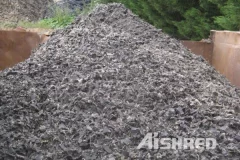
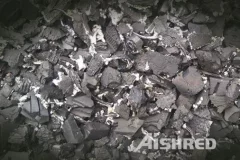
Scrap Tires to TDF with AIShred Shredders
2022-05-26Waste tires have great value and can turn them into alternative fuels used in cement kilns, power plants, steel mills, called TDF(Tire Derived Fuel), which reduces threats from unlawful stockpiling, while also creating economic profits. How is TDF produced?In simple terms, processing of discarded scrap tires into TDF consists of three main steps: shredding, screening and metal removal. The level of each is determined by the end user's needs and specifications (i.e., size of shreds and amount of metal removed). For shredding of scrap tires, equipment for tire processing generally comes in two types - slow speed and high-speed shredder. Slow speed shredder or rotary shear shredder is used to produce the larger chip sizes suitable for applications such as cement kilns, shearing the tire into 2 to 5-inch size shreds and liberating between 2 and 10 percent of the bead wire contained within the tire. The high speed single shaft shredder contains a rotor equipped with knives that shred the tire until they are of
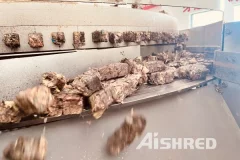
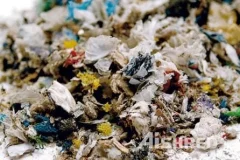
How Much does a RDF Plant Cost?
2022-05-16Alternative fuel RDF(refuse derived fuel) or solid secondary fuel is a fuel obtained from waste. RDF contains high-calorie waste components such as plastic, paper, cardboard, textiles, rubber, leather, wood, etc.RDF can be used as main or supplementary fuel in furnaces of cement plants, thermal power plants, metallurgical furnaces. The calculations performed showed the expediency of replacing gas or coal with RDF in the production of cement.The production of cement requires significant energy costs due to the need to maintain the temperature in cement kilns above 2000°C. For each ton of cement produced, typically 60-130 kg of fuel oil, or its equivalent (natural gas, coal), and about 105 kWh of electricity are required. On average, energy, fuel and electricity costs account for up to 40 percent of cement manufacturing costs. Therefore, it is advisable to use alternative fuels obtained from waste in production processes in order to reduce the use of traditional fuels and raw materials by replacing them with
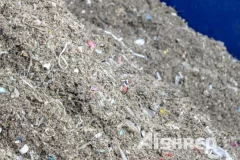
Plant for Production RDF and SRF
2022-05-09Refuse Derived Fuel(RDF) and Solid recovered fuel(SRF) is the final product of a complex production process which is modernly defined as the "chain of differentiation, recovery and recycling of municipal solid waste". RDF/SRF is an excellent fuel with a great energy power and a very limited cost, in addition, turning waste into RDF/SRF also reduces landfill space and many other costs. RDF/SRF Production Process The RDF/SRF preparation process consists of several processes: a primary shredding, screening, separation, removal of ferrous and non-ferrous metals and a final shredding. Different material compositions and specific requirements may increase or decrease certain processes. At the waste treatment site, Minhang Sanitation Company processes overproduction, bulky waste fractions, large packaging and unsorted municipal solid waste by transforming them into waste-derived fuels (RDF) of various qualities. The company specialized in disposal supplies waste incineration plants, but mainly cement plants, for
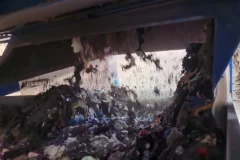
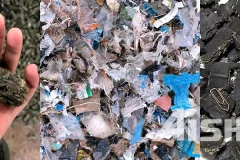
Fuel Processing for RDF, TDF and SRF
2022-05-05Since the beginning of the 21st century, more and more waste has been generated. In order to cope with the threat to the environment caused by the increase in waste, people have begun to use waste as fuel that can be burned in boilers for power generation or heating. We divide the fuel from waste into RDF, TDF, SRF according to different components and processing method of the waste. RDF(Refuse-derived fuel) is a fuel produced by sorting and shredding combustible materials contained in municipal solid waste (MSW) and industrial waste. Compared to fossil fuels, RDF is more affordable, abundant, and environmentally friendly. SRF(Solid Recovered Fuel) is a fuel produced by drying, filtering, and shredding solid waste, It is usually produced to meet the standards in Europe. The EN 15359 document gives the specifications for classifying SRF. Unlike RDF, SRF is a more refined material that is slightly more efficient than RDF, though it takes a more advanced process to make the fuel. TDF(Tire-derived fuel) is a
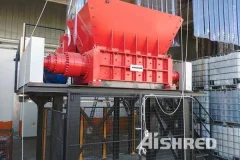
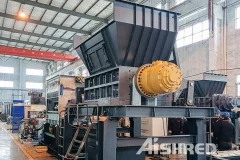
Alternative Fuels Pre-Processing Shredder
2022-04-08The GD Series double shaft shredder is designed to be versatile, making it suitable for pre-processing a wide range of solid alternative fuels. It can handle materials from municipal solid waste, industrial and commercial waste, to agricultural and forestry residues, and even automotive and truck tires. These materials are frequently used to produce alternative fuels for incinerators, chain grate furnaces, CFB boilers, and rotary kilns.The winning feature of this shredder is that it is a low speed machine.It consists of two shafts with opposite rotation, independent of each other. The cut takes place thanks to the action of the rotating blades on the fixed blades which are installed on a crosspiece placed between the two shafts. The rotating blades and fixed blades are interchangeable and resharpenable.The distance between them is also adjustable to always have a clean cut. The machine can be equipped with a screening grid that allows to obtain a product of defined dimensions, suitable for use as a
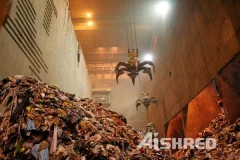

Waste-to-Energy (WtE) plants treated around 420 million tons of waste per year worldwide1. Thanks to the production of energy through waste incineration, WtE plants allow materials to be recovered and recycled. decrease the amount of waste sent to landfills and reduce the proportion of fossil fuels used as a source of energy production.Waste to RDFWaste shredding plant processes overproduction, bulky waste fractions, large packaging and unsorted commercial waste by transforming them into waste-derived fuels (RDF) in various qualities. These fuels can be sent to waste incineration plants, cement plants, steel plants, etc., to obtain certain economic benefits.Waste to Fuel PelletBy pelletization we mean the process of transforming waste, generally into pellets, to make it usable for other applications. To be transformed into pellets, the waste must first be shredded, crushed or pulverized. The materials thus obtained are then processed in a rotary drum or disc pellet machine with the aid of a binding agent,
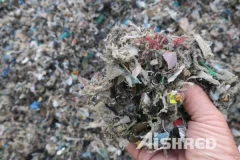
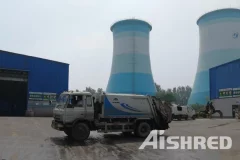
Industrial Shredder for Alternative Fuels
2022-04-06Waste is a stable and profitable energy source. Material that has been used and disposed of can be turned into energy-efficient fuel to replace or complement other sources of energy in various applications. Waste fuels, often referred to as “alternative fuels,” are generally produced from municipal solid waste and commercial and industrial waste. Common types of alternative fuels are refuse-derived fuel (RDF) and solid recovered fuel (SRF). There is enormous potential in alternative fuels. They eliminate waste and limit the purchase of black energy sources. Removing impurities and substances with low energy content allows higher-quality waste fuel to be produced. An efficient and properly designed production process increases the calorific value of the waste fuel and ensures that the fuel is optimal for the application. This has a considerable positive impact on production and finances. We manufacture industrial waste shredders and provide maintenance and professional services for companies producing or


